Parents' Communication Toolkit: Nonverbals, It's All in How You Say It
Welcome back to our series on parent/child communication strategies, and the second installment of It’s All In How You Say It where we explore how factors outside of the words you say impact the message you send. Thanks for stopping by!
In our previous post we explored para-verbal communication, which refers to the way that the tone, pitch, and cadence of our voices affect the way our messages are received. This post will dive into non-verbal communication, or, body language, and the way this can enhance or detract from communication with your child.
What is Nonverbal Communication?
Non-verbal aspects of communication include posture, gestures, facial expression, and spatial distance. Non-verbal elements of communication can be used consciously to enhance the content of verbal communication. Experts estimate that non-verbals account for 55% of what is perceived by others in communication. Other experts estimate even higher.
Posture and spatial distance are major considerations in demonstrating how receptive we are to the current exchange. Hunched shoulders, shoulders oriented away from the speaker and increased distance from your child can all indicate disinterest or guardedness, while a body orientation facing your child and close proximity can show interest and engagement.
Gestures can enhance understanding of the content of your message by offering context for an unfamiliar term or concept and help to maintain your child’s interest by adding an additional sensory element. Gestures can also help with retention of information.There are three different types of gestures used in communication; gestures which convey meaning, gestures that reflect cadence and are used for emphasis and gestures that direct attention. Gestures can provide context for an unfamiliar concept or word or can add detail in an unspoken way, as with indicating size or direction. Additionally, gestures promote attentiveness and help your child filter for significant information. Each of these is essential to communication, and are typically unconscious on the part of the speaker. Here is a fascinating article exploring the significance of gestures in communication and learning: Hand Gestures and How They Help Children Learn.
Facial expression is one of the most basic communication tools. Long before your child had the capacity for speech, you smiled at your baby to elicit a response and to bond. Facial expressions continue to be central to how they read our mood and make meaning of what we’re saying. When we communicate warmth and authenticity with our facial expressions, in tandem with other non-verbals, we are showing that a situation is safe for connection.
Eye contact is an important tool to explore, and one that should be used flexibly. On one hand, making eye contact with your child can signal that you are ready to listen, interested in what they have to say, or lend significance to what you are communicating. On the other hand, don’t assume that just because your child isn’t making eye contact they aren’t paying attention. Some children focus better while looking at/doing something else. Lack of eye contact can also allow an exchange to be more informal, which can encourage conversation and engender openness to topics that would otherwise feel too uncomfortable or embarrassing to discuss. If it feels important to confirm that your child is still engaged, rather than asking for eye contact, consider requesting a thumbs-up or nod, further utilizing your non-verbal options!
As was mentioned in our previous post, it is important to note that when verbal messages and para or non-verbal messages conflict with one another, listeners, especially children, tend to believe the non-verbal information. Consistency across these aspects of communication is critical to limit confusion and disconnect.
Awareness around the different elements of non-verbal communication can help set a conversation up for success and build a sense of closeness in a relationship. Strategic use of non-verbals can also enhance the effectiveness of communication and support memory and comprehension.
As with all of these tools, they are not meant to be prescriptive, and you are invited to use what works for you and leave the rest. Please know that your desire to learn more about effective ways to communicate with your child is valuable in and of itself!
-
An Ode to Teachers and School Staff
Paraverbal Communication with Children
Listening Skills to Help Cultivate a Healthy Connection with Your Child
How to Effectively Communicate with Your Child’s Mental Health Therapist
Counseling for Communication Skills & Boundary Setting
How to Use Questions to Build Engagement & Improve Communication
Search Our Other Blogs!
Interested in Counseling for Caregiving, Parenting, Communication Skills, & Boundary Setting?
If you’re a Marylander who knows that counseling is the direction you need to take, the therapists at LifeSpring Counseling Services are here to help. We offer online counseling services for mindfulness, depression, anxiety, trauma, and grief and loss. We also offer Brainspotting as a specialized service, and Brainspotting can be done online, too!
Here’s how you can get started! Online counseling for caregiving, parenting, communication skills, and boundary setting aren’t the only services offered at our Maryland office
The counselors and social workers at our Maryland office also offer counseling services for trauma, grief and loss, boundary setting, communication skills, and difficult life transitions. We also offer specialized counseling services including Brainspotting and spiritually-integrated counseling. Because we are located next to several local universities, we also work with college students and international students.
Written by: Liza Krohn, LCSW-C


